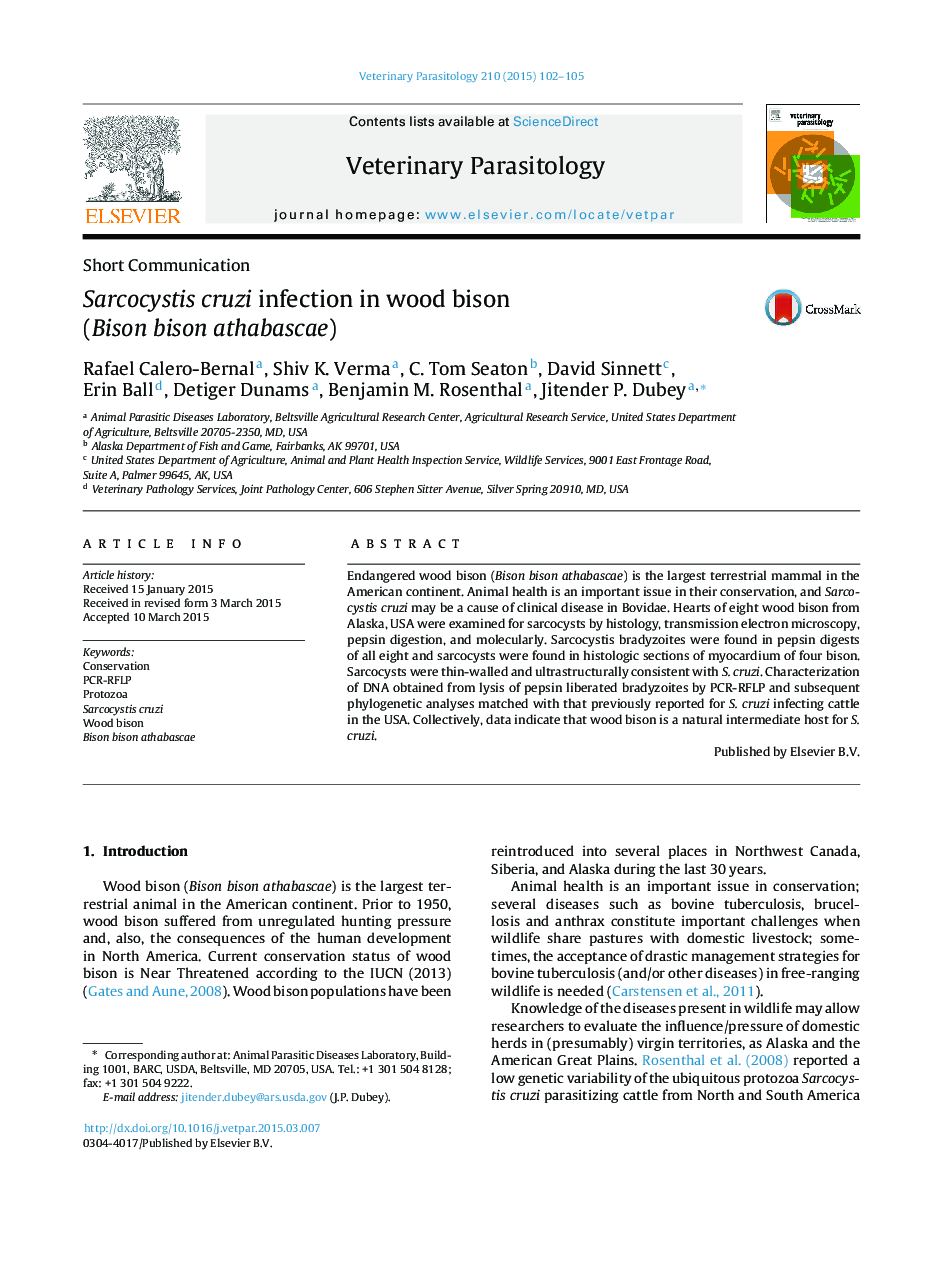| Article ID | Journal | Published Year | Pages | File Type |
|---|---|---|---|---|
| 5802648 | Veterinary Parasitology | 2015 | 4 Pages |
â¢Parasitic infections should be studied in the endangered wood bison (Bison bison athabascae).â¢Microscopy and molecular assays indicate that wood bison is an intermediate host for Sarcocystis cruzi.â¢Phylogenetic analyses showed a lack of genetic diversity in S. cruzi.
Endangered wood bison (Bison bison athabascae) is the largest terrestrial mammal in the American continent. Animal health is an important issue in their conservation, and Sarcocystis cruzi may be a cause of clinical disease in Bovidae. Hearts of eight wood bison from Alaska, USA were examined for sarcocysts by histology, transmission electron microscopy, pepsin digestion, and molecularly. Sarcocystis bradyzoites were found in pepsin digests of all eight and sarcocysts were found in histologic sections of myocardium of four bison. Sarcocysts were thin-walled and ultrastructurally consistent with S. cruzi. Characterization of DNA obtained from lysis of pepsin liberated bradyzoites by PCR-RFLP and subsequent phylogenetic analyses matched with that previously reported for S. cruzi infecting cattle in the USA. Collectively, data indicate that wood bison is a natural intermediate host for S. cruzi.
Graphical abstractDownload full-size image
